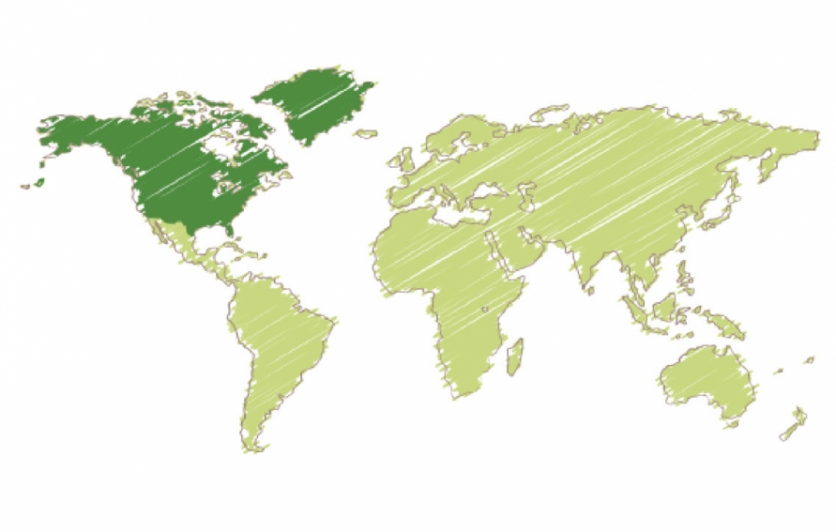United States and Canada

What were Native Americans growing before Europeans arrived on American shores in the late 15th century? Maize, beans, tobacco, pumpkins and squashes. In Southeast Florida, the Tequesta, who relied on seafood and berries, sea grapes and palm nuts, ground up coontie root to make a type of bread. On the west coast, the Calusa ate fish and oysters and, according to some historians, cultivated papaya and gourds. The Seminole tribe, who moved south from north Florida to the Everglades, ate boiled swamp cabbage, the tender inner cores of the cabbage palm, a delicacy known today as hearts of palm.
Seminole pumpkins, the thick-skinned calabazas grown today, are a cultivar of Cucurbita moschata, believed to have originated in South America, Central America and Mexico, not Florida. But they were cultivated by the Seminoles before the arrival of Columbus. Seminoles planted seeds near the bases of trees so that the vines could climb onto the branches and the pumpkins would hang down, well out of the way of pigs and cattle.
Foods from the U.S. and Canada
BLUEBERRIES (Vaccinium sec. Cyanococcus) grow from Canada south to Florida. Related to cranberries and huckleberries, blueberries were eaten by First Nations people in Canada but were not domesticated until the 1900s. Eaten fresh and used in baked goods, jellies, jams and pies, blueberries are high in antioxidants and low in calories.
PUMPKIN (Cucurbita pepo) is one of the oldest domesticated plants, grown today for food, oil and holiday decorations. Raw pumpkin is a good source of vitamin A and beta-carotene. The flowers, leaves and seeds are also eaten.
STRAWBERRIES (Fragaria x ananassa), grown in Florida in the winter and early spring, are the result of cross-breeding in the 1700s that made them sweet, large and juicy. Essential for ice cream, pies, jams and jellies, milkshakes and baked goods, strawberries are rich in vitamin C.
SUNFLOWERS (Helianthus annuus) were first domesticated in the U.S. and what’s now Mexico, grown as a crop by Native American people. They were brought to Europe from explorers. They’re used for more than ornamentals: seeds are used as a snack food, salad and addition to breads, and seasoning; the oil extracted from the seeds is used in cooking.
Sunflowers, cultivated by Native Americans as a source of oil, seeds, fiber and medicine, grow in abundance in South Florida! At Grow2Heal at Homestead Hospital, we grow multiple varieties to brighten our spaces for patients, staff and visitors.
Communities Near You
What’s happening near you
Vizcaya's Urban Farm: A Behind the Scenes Guided Tour
Vizcaya VillageMiami
Tour of Kitchens & Tropical Living
Village of Merrick ParkCoral Gables






